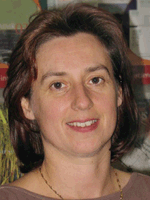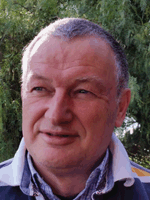Integrated petroleum systems analysis to understand the source of fluids in the Browse Basin, Australia
Tehani Palu A , Lisa Hall A , Emmanuelle Grosjean A C , Dianne Edwards A , Nadege Rollet A , Karen Higgins A , Christopher Boreham A , Andrew Murray B , Duy Nguyen A , Kamal Khider A and Tamara Buckler AA Geoscience Australia, GPO Box 378, Canberra, ACT 2601, Australia.
B Murray Partners PPSA Pty Ltd, 20 Ellesmere Heights, Hillarys, WA 6025, Australia.
C Corresponding author. Email: emmanuelle.grosjean@ga.gov.au
The APPEA Journal 57(2) 781-788 https://doi.org/10.1071/AJ16191
Accepted: 9 March 2017 Published: 29 May 2017
Abstract
The Browse Basin is located offshore on Australia’s North West Shelf and is a proven hydrocarbon province, hosting gas with associated condensate in an area where oil reserves are typically small. The assessment of a basin’s oil potential traditionally focuses on the presence or absence of oil-prone source rocks. However, light oil can be found in basins where source rocks are gas-prone and the primary hydrocarbon type is gas-condensate. Oil rims form whenever such fluids migrate into reservoirs at pressures less than their dew point (saturation) pressure. By combining petroleum systems analysis with geochemical studies of source rocks and fluids (gases and liquids), four Mesozoic petroleum systems have been identified in the basin.
This study applies petroleum systems analysis to understand the source of fluids and their phase behaviour in the Browse Basin. Source rock richness, thickness and quality are mapped from well control. Petroleum systems modelling that integrates source rock property maps, basin-specific kinetics, 1D burial history models and regional 3D surfaces, provides new insights into source rock maturity, generation and expelled fluid composition.
The principal source rocks are Early–Middle Jurassic fluvio-deltaic coaly shales and shales within the J10–J20 supersequences (Plover Formation), Middle–Late Jurassic to Early Cretaceous sub-oxic marine shales within the J30–K10 supersequences (Vulcan and Montara formations) and K20–K30 supersequences (Echuca Shoals Formation). These source rocks contain significant contributions of terrestrial organic matter, and within the Caswell Sub-basin, have reached sufficient maturities to have transformed most of the kerogen into hydrocarbons, with the majority of expulsion occurring from the Late Cretaceous until present.
Keywords: condensate, dew point, gas, geochemistry, oil, source rocks.

Tehani Palu (nee Kuske) is a geoscientist in Geoscience Australia’s Resources Division, Energy Systems Branch. Tehani has been in her current role since 2013, which sees her undertaking petroleum systems analysis within Australian basins. She gained her master’s degree from the University of Waikato (New Zealand) in 2009 and joined Geoscience Australia shortly after completing her studies. She has since been involved in various projects including greenhouse gas monitoring for carbon capture and storage and petroleum acreage products in collaboration with the Department of Industry and Science. Tehani is a member of PESA. |

Lisa Hall is a senior research scientist in Geoscience Australia’s Resources Division, Energy Systems Branch. Her current research is focused on hydrocarbon prospectivity assessments and petroleum systems modelling in a variety of Australian basins. Lisa holds an MSc in geology and geophysics from Cambridge University (1999) and a DPhil in structural geology and neotectonics from Oxford University (2003). Lisa is a member of PESA. |

Emmanuelle Grosjean is a senior geochemist in Geoscience Australia’s Resources Division, Energy Systems Branch. Emmanuelle joined Geoscience Australia in 2005 as a petroleum geochemist to work on the detection of natural hydrocarbon seepage in Australia. She is currently involved in several studies focused on understanding the petroleum prospectivity of Australia’s sedimentary basins, including the Perth and Browse basins. She received her PhD in organic geochemistry from the University of Strasbourg (France) in 2002, and subsequently spent three years at the Massachusetts Institute of Technology working on the Precambrian petroleum systems of the South Oman Salt Basin. |

Dianne Edwards is a senior petroleum geochemist in Geoscience Australia’s Resources Division, Energy Systems Branch. Her scientific focus is on defining the petroleum systems of Australia’s petroliferous basins including both conventional and unconventional play types. Dianne received her BSc (Hons) degree in geology and MSc in organic petrology and organic geochemistry from the University of Newcastle-upon-Tyne (UK). She was awarded her PhD from the University of Adelaide in 1996. Dianne is a member of PESA. |

Nadege Rollet is a senior geoscientist in Geoscience Australia’s Resources Division, Energy Systems Branch. Nadege is presently investigating the petroleum prospectivity of the Browse Basin. Nadege graduated from the University of Paris – Pierre et Marie Curie (France) where she obtained a MSc and a PhD (1999) in geology and geophysics. Her studies focused on the structural framework and geodynamics of the Ligurian Sea (western Mediterranean). Since joining Geoscience Australia, Nadege has contributed to assessments of the petroleum prospectivity, seepage studies and CO2 storage of Australian sedimentary basins. Nadege is a member of PESA and SEAPEX. |

Karen Higgins is a geologist in Geoscience Australia’s Resources Division, Energy Systems Branch, specialising in basin analysis for petroleum exploration and CO2 sequestration. Karen is presently working on the offshore North West Shelf of Australia. She received a BSc (Hons) geology degree from ANU in 2002. Karen is a member of PESA. |

Christopher Boreham is a senior research scientist in Geoscience Australia’s Resources Division, Energy Systems Branch. He is an internationally recognised petroleum geochemist with over three decades of experience in the application of organic geochemistry to the evolution of oil and gas in sedimentary basins. More recently he has extended these geochemical studies to unconventional petroleum (coal seam methane, shale gas and oil). He also leads key aspects of the CO2CRC’s studies on the injection of CO2 into a depleted natural gas field and a saline aquifer. Chris obtained his PhD in inorganic chemistry at ANU in 1978 and has worked at Geoscience Australia since 1980. |

Andrew Murray was principal advisor on petroleum systems at Woodside Energy Ltd, Australia’s largest integrated E&P company. In early 2014, Andrew retired from full time work at Woodside and started Murray Partners PPSA to offer training and support to exploration geoscientists who wish to do their own petroleum system analysis and risking, but are not specialists in geochemistry or basin modelling. Andrew holds MSc and PhD degrees in petroleum geochemistry and has 24 years’ experience spread across most regions of the world, across government, academia and industry and across the basin modelling, geochemistry and reservoir engineering disciplines. As well as 18 years’ experience as petroleum systems advisor at Woodside, he worked for three years in the Shell International R&D centre in The Hague and six years as a research scientist with Geoscience Australia. |

Duy (Victor) Nguyen is a senior petroleum engineer in Geoscience Australia’s Resources Division, Energy Systems Branch where he is working on the Browse and Roebuck basins. He holds a BSc and MSc in petroleum engineering from the University of New South Wales. As part of his degrees, Victor researched the techno-economics of CO2 geological sequestration in Australia. Victor has five years of oil and gas industrial experience working for Schlumberger in Australia, Malaysia, India, the Middle East and Africa. Since 2009, Victor has worked on the assessment of the CO2 geological storage potential of the Bonaparte, Gippsland and Browse basins. |

Kamal Khider is a senior research scientist in Geoscience Australia’s Resources Division, Energy Systems Branch. He has BSc, MSc (stratigraphy and sedimentology) and a PhD in applied geochemistry. Kamal has 30 years of academic and consultative experience in geosciences, working in many academic and industrial geological organisations in Australia, Middle East and North Africa. He worked on regional geological appraisal of the Tertiary Eocene–Oligocene–Miocene boundaries IGCP 174, regional geochemical assessment of the Cobar-Girilambone region in NSW and the Queensland Carbon Dioxide Geological Storage Atlas. Since 2007, he has worked on several of Geoscience Australia’s petroleum and CCS projects. Kamal is a member of AAPG, GSA, SEPM and PESA. |

Tamara Buckler is a data manager in Geoscience Australia’s Resources Division, R&D Information Services Branch. Tamara has worked in the Database Management section since commencing work with the AGSO in 1996. Tamara has completed Data Management and Oracle training and manages several corporate Oracle databases, including the petroleum geochemistry database. |
References
Blevin, J. E., Boreham, C. J., Summons, R. E., Struckmeyer, H. I. M., and Loutit, T. S. (1998a). An effective Lower Cretaceous petroleum system on the North West Shelf; evidence from the Browse Basin. In Purcell, P. G. and Purcell, R. R. (eds.), Sedimentary Basins of Western Australia 2: Proceedings of Petroleum Exploration Society of Australia Symposium. Petroleum Exploration Society of Australia, Perth. 397–420.Blevin, J. E., Struckmeyer, H. I. M., Cathro, D. L., Totterdell, J. M., Boreham, C. J., Romine, K. K., Loutit, T. S., and Sayers, J. (1998b). Tectonostratigraphic framework and petroleum systems of the Browse Basin, North West Shelf. In Purcell, P. G. and Purcell, R. R. (eds.), The Sedimentary Basins of Western Australia 2: Proceedings of the Petroleum Exploration Society of Australia Symposium. Petroleum Exploration Society of Australia, Perth. 369–395.
Brincat, M. P., Lisk, M., Kennard, J. M., Bailey, W. R., and Eadington, P. J. (2003). Evaluating the oil potential of the Caswell Sub-basin: insights from fluid inclusion studies. In Proceedings Timor Sea Petroleum Geoscience, Proceedings of the Timor Sea Symposium, Darwin, Northern Territory 2003, pp. 19–20.
Edwards, D. S., Grosjean, E., Palu, T., Rollet, N., Hall, L., Boreham, C. J., Zumberge, A., Zumberge, J. E., Murray, A. P., Palatty, P., Jinadasa, N., Khider, K., and Buckler, T. (2016). Geochemistry of dew point petroleum systems, Browse Basin, Australia. In Proceedings Australian Organic Geochemistry Conference, Fremantle, 4–7, December 2016. Available from http://www.ga.gov.au/metadata-gateway/metadata/record/101720 [Verified 30 March 2017].
Grosjean, E., Edwards, D. S., Kuske, T. J., Hall, L., Rollet, N., and Zumberge, J. (2015). The source of oil and gas accumulations in the Browse Basin, North West Shelf of Australia: a geochemical assessment. AAPG/SEG ICE Conference, Melbourne, Australia, 13–16 September 2015. Available at http://www.searchanddiscovery.com/pdfz/documents/2016/10827grosjean/ndx_grosjean.pdf.html [Verified 30 March 2017].
Grosjean, E., Edwards, D., Boreham, C., Hong, Z., Chen, J., and Sohn, J. (2016). Using neo-pentane to probe the source of gases in accumulations of the Browse and northern Perth basins. In Proceedings Australian Organic Geochemistry Conference, Fremantle, 4–7 December 2016. Available at http://www.ga.gov.au/metadata-gateway/metadata/record/101680 [Verified 30 March 2017].
Kennett, B., Salmon, M., Saygin, E., AusMoho Working Group (2011). AusMoho: the variation of Moho depth in Australia. Geophysical Journal International 187, 946–958.
| AusMoho: the variation of Moho depth in Australia.Crossref | GoogleScholarGoogle Scholar |
Pepper, A. S., and Corvi, P. J. (1995a). Simple kinetic models of petroleum formation. Part I: oil and gas generation from kerogen. Marine and Petroleum Geology 12, 291–319.
| Simple kinetic models of petroleum formation. Part I: oil and gas generation from kerogen.Crossref | GoogleScholarGoogle Scholar |
Pepper, A. S., and Corvi, P. J. (1995b). Simple kinetic models of petroleum formation. Part III: Modelling an open system. Marine and Petroleum Geology 12, 417–452.
| Simple kinetic models of petroleum formation. Part III: Modelling an open system.Crossref | GoogleScholarGoogle Scholar |
Radlinski, A. P., Kennard, J. M., Edwards, D. S., Hinde, A. L., and Davenport, R. (2004). Hydrocarbon generation and expulsion from Early Cretaceous source rocks in the Browse Basin, North West Shelf, Australia: a Small Angle Neutron Scattering study. The APPEA Journal 44, 151–180.
Rollet, N., Abbott, S. T., Lech, M. E., Romeyn, R., Grosjean, E., Edwards, D. S., Totterdell, J. M., Nicholson, C. J., Khider, K., Nguyen, D., Bernardel, G., Tenthorey, E., Orlov, C., and Wang, L. (2016a). A regional assessment of CO2 storage potential in the Browse Basin: results of a study undertaken as part of the National CO2 Infrastructure Plan. Record 2016/17. Geoscience Australia, Canberra.
Rollet, N., Grosjean, E., Edwards, D., Palu, T., Abbott, S., Totterdell, J., Lech, M. E., Khider, K., Hall, L., Orlov, C., Nguyen, D., Nicholson, C., Higgins, K., and McLennan, S. (2016b). New insights into the petroleum prospectivity of the Browse Basin: results of a multi-disciplinary study. The APPEA Journal 56, 483–494.
| New insights into the petroleum prospectivity of the Browse Basin: results of a multi-disciplinary study.Crossref | GoogleScholarGoogle Scholar |


